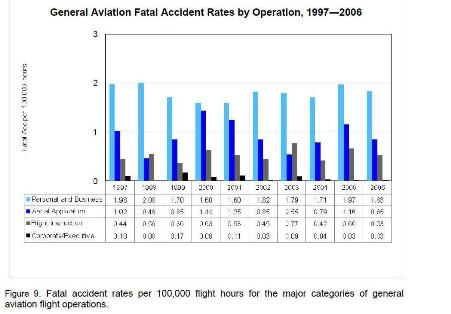A persistently high fatal accident rate for general aviation has spurred the US Federal Aviation Administration to take outreach action on certain segments of the sector.
During the month of April, the agency plans to hold nearly 100 safety stand-down events across the US to get pilots to focus on professionalism, pre-flight actions, avoiding instrument conditions in cruise flight and avoiding stalls due to airspeed mismanagement.
FAA administrator Randy Babbitt says the agency is going to "refocus its efforts" to transform the safety culture in the sector, which includes on-demand charter as well as business aviation operations.
The stand-downs are part of a broader 10-year data-driven plan in which the FAA is hoping to decrease the general aviation (GA) fatal accident rate by 10%, a less ambitious goal than what has been set out for similar programs in the commercial aviation and the helicopter sector.
The commercial aviation safety team (CAST) decreased the fatal accident rate for airlines 65% between 1998 to 2007, 15% under the original goal of 80%. Likewise the international helicopter safety team in 2005 set out to reduce the helicopter accident rate 80% by 2016, a goal the industry appears on track to achieve based on accident records over the past four years.
"Ten percent is something we're shooting for, not something we're limiting ourselves to," says Mel Cintron, manager for the FAA's general aviation and commercial division. Cintron notes that the GA fatal accident rate for 2010 was 1.14 fatal accidents per 100,000 flight hours, down from 1.16 in 2009. The agency's goal is to reduce the rate by 1% per year.
Within the broader GA community, the highest accident rates are historically linked to personal and business flights (1.83 per 100,000 flight hours), with aerial application (0.85) and flight instruction (0.53) in second and third place, according to the most recent US National Transportation Safety Board tallies. Corporate and executive aviation, also considered GA, ranked the best in the NTSB report for 2006, with a rate of 0.03 fatal accidents per 100,000 flight hours.
 |
|---|
©NTSB |
The FAA expects to make the largest gains in the first five years of the program by attacking "low-hanging fruit". Included is an effort to boost safety for agricultural operators and a new advisory circular (AC) the agency expects to publish by May focusing on the amateur-built aircraft sector, which Babbitt has a fatal accident rate five times higher than GA as a whole.
Babbitt calls the problem a "second-owner risk", where a buyer of an amateur-built aircraft may not be familiar with principles of high performance aircraft like high wing-loading. "There's a very clear spike in accident rate versus ownership hours," he says. "Once they get 50-60h, they're fine."
 |
|---|
©NTSB |
For the AC, Cintron says the FAA joined with the industry to develop a "bucketized" list of "what are the things that can get you into trouble" for a variety of amateur-built aircraft.
Other low-hanging fruit includes improving the work of certified flight instructors, an effort Cintron says will have a "cascade effect" on safety. Along with evaluating flight instructor recurrency programs, the FAA is planning to have a conference in July among all universities with flight training programs to discuss best practices.
Source: Flight International



















